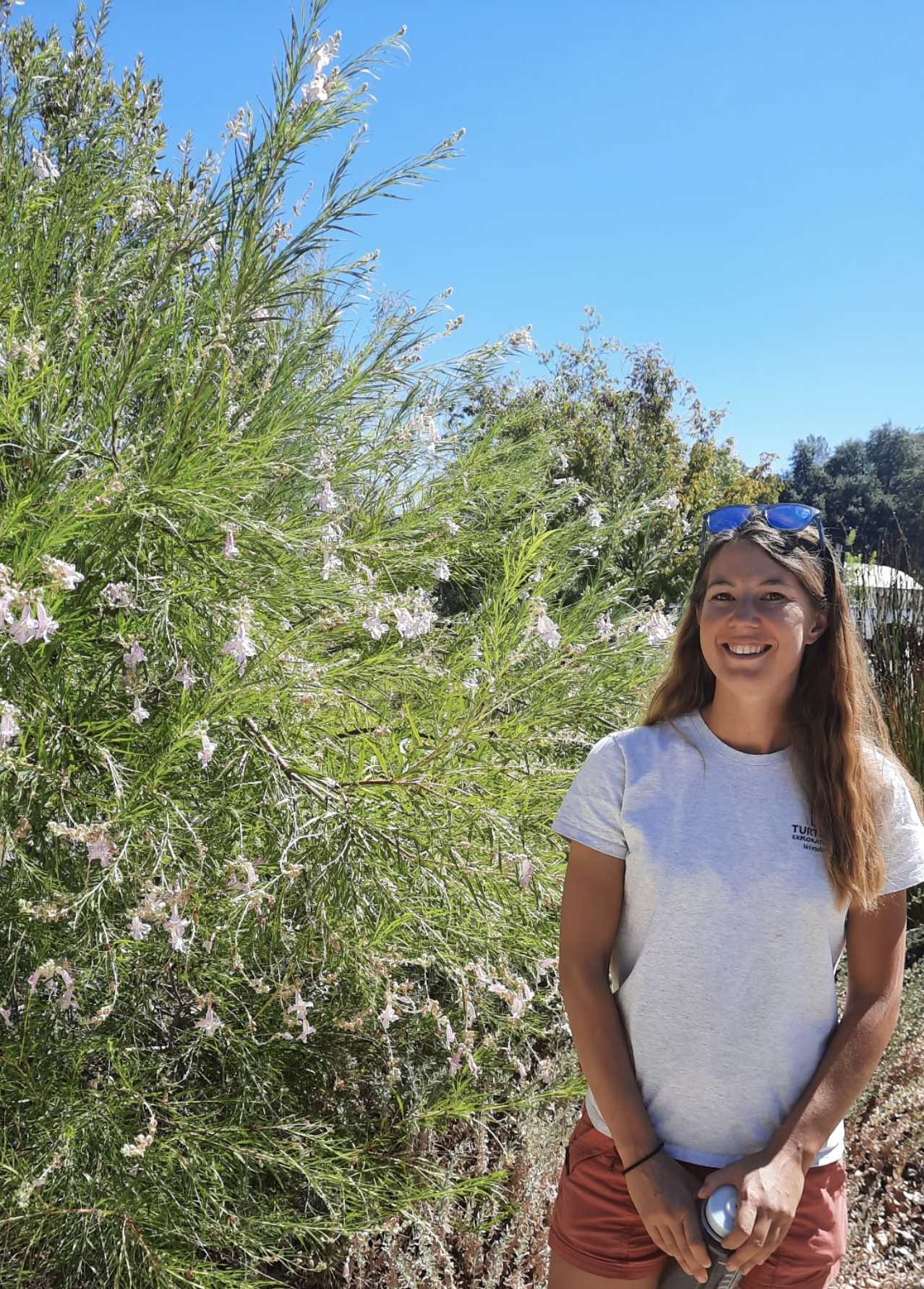September Plant of the Month: Desert Willow
September 15, 2022
The Plant of the Month for September is chosen by Hannah Sweeney, Turtle Bay’s Lead Gardener at the Botanical Gardens. Hannah likes that Desert Willow is drought-tolerant, can bloom all summer, and is beloved by hummingbirds.
Desert Willows grow as large shrubs or small trees in desert washes and near scarce desert water sources. They are very drought tolerant once established. Desert Willows do not bloom in summer without a deep watering (think stormwater running through a desert wash, a brief but thorough watering). More deep waterings (weekly or every other week in 100+ degree temperatures) mean more blooms in summer, but they do not need regular summer water to survive. In fact, during the summer, regular watering (multiple times a week) can rot the roots.
Desert Willow is native throughout the Southwest and a California desert (Sonoran and Mojave deserts). It is not related to true Willows Salix spp. but looks very similar in growth habit. Hummingbirds love the bell-shaped flowers and visit them throughout late spring and summer, whenever they are in bloom.
Desert Willow flowers close-up: you can see the tubular throats of the flowers that are regularly visited by hummingbirds.
Desert Willow habit: this Desert Willow growing in the Turtle Bay Nursery has not been trained as a tree but is left to grow as a large shrub (more blooms!)
Desert Willow is available in our Nursery now! To see the updated inventory list along with growing information, click the button below.
Caring for Desert Willow Chilopsis linearis in our area:
Plant in well-draining soil (remember, it is found growing in sandy soil in nature).
If you don’t have well-draining soil, create small (or large) raised planting areas.
Water weekly in summer until established (1-2 years), then occasionally (or more often if you want to repeat summer bloom). Tip: blooms occur in the desert most often after a storm; in summer in our area, you and the water you apply are the “storm.”
Gardening or plant questions? Email us at: gardens@turtlebay.org



